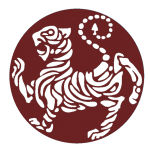The following are extracts paraphrased from an article written by Shihan Yokota which can be read in full on the Karate Coaching website.
Shihan
First of all, shihan is not exactly a title. In other words, this is not something an organization would bestow. Shihan (師範) means literally “to be a model” but it is only a formal word for sensei or instructor or teacher. So if you are teaching karate, or for that matter any martial arts or non martial arts field, you can be addressed as shihan. However, it is customarily reserved for senior instructors or teachers. For instance, a Nidan or Sandan person at the age of 20’s would not normally be addressed as shihan even if he or she may be the chief instructor of a dojo or a club. Since it is not a bestowed title it does not have the age or rank requirement. Godan and above is considered as the senior ranks at which sensei can be addressed as Shihan. However it would not be considered impolite or rude if you address a senior instructor as sensei even if he is 8th or 9th dan.
Shuseki Shihan
There is one exception to the above rule. There is a bestowed title of Shuseki Shihan. Shuseki means “Top position” so it means the Chief Instructor of an organization. This is used only in a large organization like JKA, JKS, ISKF, etc as they have multiple number of senior instructors. If you are the only instructor in your dojo or an organization then you should not use Shuseki Shihan even if you are a senior rank instructor.
Kyoshi, Renshi and Hanshi
These are bestowed titles. However, in general they are not used in karate (with JKA, ISKF, JKS, IJKA and WJKA). The only exception is the Zen Nihon Karatedo Renmei (Japan Karate Federation or JKF). This organization is a non style specific organization and its members are Shotokan, Shito ryu, Goju ryu and Wado ryu.
The requirements to qualify for these ranks (by JKF) are:
Hanshi (範士): (“gentleman, samurai, warrior, or scholar”) 8th dan for more than 2 years, older than 60
Kyoshi (教士): (“Master of Masters”) 6th dan and above for minimum 2 years, older than 50
Renshi (錬士): (“Polished Expert”) 5th dan and above for minimum 1 year, older than 40
Kancho
Kancho (館長) means the head of a dojo. Kan means building so the connotation is the dojo. Cho means the head or top. So this implies that Kancho is the head of a style but not a family tradition, see Soke below.
Soke
Soke (宗家) means a central family who carries a certain art as their family tradition and the Soke is the head of that family. Though you can find such a family in some Japanese martial arts such as kenjutsu this tradition is more popularly with the non martial arts such as tea ceremony (sado), flower arrangement (kado), Japanese dancing (kabuki, noh, etc), Japanese music and instruments (shakuhachi, koto, etc). It is customarily carried by the same family of the founder of the tradition but of course there are some exceptions.It is a title inherited not awarded. Those inheriting the Soke title are the highest authority for the style. Although the Soke holds a belt rank he is considered to be “beyond the rank system”. As such the Soke can award any rank to anyone even if the rank he awards is higher than his own.
Funakoshi sensei did not care for these titles. He never accepted any rank for himself even though he granted those ranks to his students. So it can be concluded he did not accept any worldly titles such as Soke, Hanshi, Kyoshi, Renshi or even Kancho which he could have and deserved. The only exception is Shuseki Shihan. When the Japan Karate Association (JKA) was founded in 1948 he accepted to become the first Chief Instructor.
